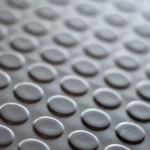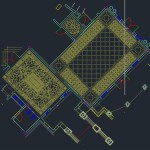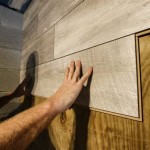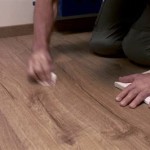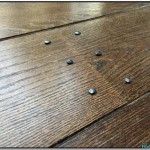Laying Engineered Wood Flooring on Uneven Floorboards
Engineered wood flooring offers a durable and aesthetically pleasing alternative to solid hardwood. Its multi-layered construction provides increased stability and resistance to moisture and temperature variations, making it suitable for a wider range of environments. However, successful installation hinges on proper subfloor preparation. Uneven floorboards pose a significant challenge to achieving a smooth, level surface, which is crucial for the longevity and performance of the new engineered wood floor.
Directly installing engineered wood flooring over uneven floorboards will likely result in several problems. These include squeaking, flexing, gapping between planks, and premature wear. Unevenness creates stress points on the engineered wood, potentially leading to damage and a compromised appearance. Thorough preparation is, therefore, an indispensable step in the installation process.
Assessing the Extent of Unevenness
The first step in preparing for engineered wood flooring installation is a comprehensive assessment of the existing floorboards. This involves identifying and quantifying the extent of any unevenness. Several tools and techniques can be employed for this purpose. A long, straight edge, such as a level or a metal ruler, is fundamental. Place the straight edge across the floorboards in multiple directions. Any gaps visible between the straight edge and the floorboards indicate unevenness.
A spirit level, used in conjunction with the straight edge, helps to determine the degree of height difference. A laser level can also be beneficial, especially for larger areas. This tool projects a laser line across the floor, highlighting any high or low spots. Another useful tool is a moisture meter. It's important to ensure the existing floorboards have an acceptable moisture content (typically between 6-12%) before beginning installation. High moisture content can lead to warping and further exacerbate unevenness issues.
The assessment should cover the entire area where the engineered wood flooring will be installed. It's important to identify both general unevenness (gradual slopes or dips) and localized irregularities (individual high or low boards). Documenting the findings, either through notes or photographs, is essential for planning the necessary corrective measures. This detailed assessment provides a clear picture of the challenge and guides the selection of the appropriate leveling solutions.
Addressing Minor Unevenness: Using Underlayment
For minor unevenness, an underlayment might sufficiently address the problem. Underlayment serves as a cushioning layer between the subfloor and the engineered wood flooring, absorbing minor imperfections and providing a smoother surface. Different types of underlayment offer varying degrees of leveling capabilities. Materials such as foam, cork, and rubber provide some degree of cushioning and can compensate for slight undulations in the subfloor. Thicker underlayment usually offers greater leveling capacity. However, using too thick an underlayment can also cause a "spongy" feel underfoot. Selecting an underlayment that is appropriate for the specific type of engineered wood flooring is crucial; refer to the manufacturer's recommendations.
Self-leveling underlayments, typically consisting of a latex-modified compound, are designed to flow into imperfections and create a smooth, level surface. These products are suitable for addressing slight variations in height and filling minor depressions. Ensure the subfloor is clean and free of debris before applying the underlayment. Follow the manufacturer’s instructions carefully regarding mixing, application, and drying times. Self-leveling underlayments often require priming the subfloor to ensure proper adhesion and prevent moisture absorption. While underlayment can be a simple and cost-effective solution for minor unevenness, it may not be sufficient for more significant variations. In such cases, more extensive subfloor preparation is necessary.
Addressing Significant Unevenness: Leveling Compounds and Wood Shims
When the unevenness exceeds the capacity of underlayment, more aggressive solutions are required. These typically involve the use of leveling compounds or wood shims. Leveling compounds are self-leveling mixtures that are poured onto the subfloor to create a smooth, even surface. They are suitable for filling larger dips and correcting more pronounced variations in height. Wood shims, on the other hand, are thin, tapered pieces of wood that are used to raise low spots and create a level plane.
Using leveling compound requires careful preparation. First, thoroughly clean the subfloor to remove any dust, debris, or loose particles. Cracks and holes should be filled with patching compound before applying the leveling compound. A primer is generally recommended to improve adhesion and prevent moisture absorption. Follow the manufacturer's instructions regarding mixing and application. Leveling compound typically requires a specific drying time before installing the engineered wood flooring. Consider using a notched trowel to spread the compound evenly and ensure proper coverage.
When using wood shims, begin by locating the low spots in the subfloor. Position the shims directly beneath the floorboards in these areas, using a construction adhesive to secure them in place. Gradually add shims until the floorboards are level with the surrounding areas. Use a level to ensure accuracy. Once the shims are in place, secure them further by driving screws or nails through the floorboards into the shims. Excess shim material can be trimmed away using a utility knife or saw. This method works best when addressing localized low spots. Large areas of unevenness may require a combination of shims and leveling compound.
In some instances, individual floorboards may be significantly higher or lower than the surrounding boards. These projecting boards can be planed down using a hand plane or a power planer. Exercise caution when using a power planer to avoid removing too much material. Low boards can be built up using wood shims or thin plywood layers. These adjustments ensure a more consistent and level surface across the entire subfloor.
Choosing between leveling compound and shims depends on the nature and extent of the unevenness, as well as the specific characteristics of the subfloor. Leveling compound is often the preferred solution for large areas with gradual variations in height, while shims are better suited for addressing localized low spots. A combination of both methods may sometimes be necessary to achieve optimal results.
After any leveling has occurred, it is important to re-check the levelness of the floorboards. The tolerance for unevenness will depend on the engineered wood flooring manufacturer’s instructions, but a general guideline is no more than 3/16 of an inch over a 10-foot span. This can be tested with a straight edge and a level, and any remaining imperfections can be addressed as necessary before installing the new flooring.
It is vital to remember that thorough subfloor preparation is not just about aesthetics; it directly impacts the long-term performance of the engineered wood flooring. A level, stable subfloor prevents excessive strain on the flooring material, minimizing the risk of squeaking, flexing, gapping, and premature wear. By investing the necessary time and effort in subfloor preparation, one can ensure that the engineered wood flooring will provide years of beauty and functionality.

Laying New Wood Flooring Over Original Uneven Floorboards Le Arthur Wells

Laying New Wood Flooring Over Original Uneven Floorboards Le Arthur Wells

How To Correctly Level Wood Flooring Help Advice Leader Floors

Floor Levelling Explained An Expert Guide Craftedforlife

Laying New Wood Flooring Over Original Uneven Floorboards Le Arthur Wells

Laying New Wood Flooring Over Original Uneven Floorboards Le Arthur Wells

Installation Methods For Wooden Floor Craftedforlife

Engineered Wood Floor Laying Flooring Installation Method

Can We Install Laminate Flooring On An Uneven Floor Singapore

Laying Solid Wood Flooring Onto Existing Floorboards And Beyond Blog
Related Posts

